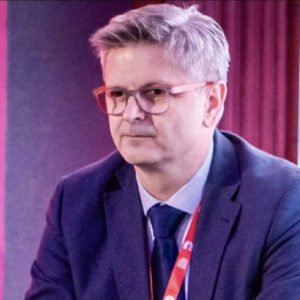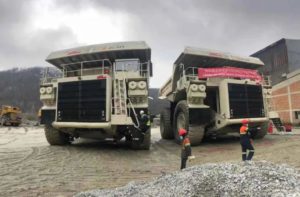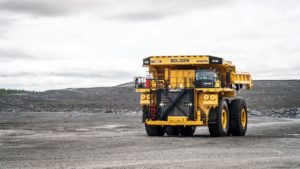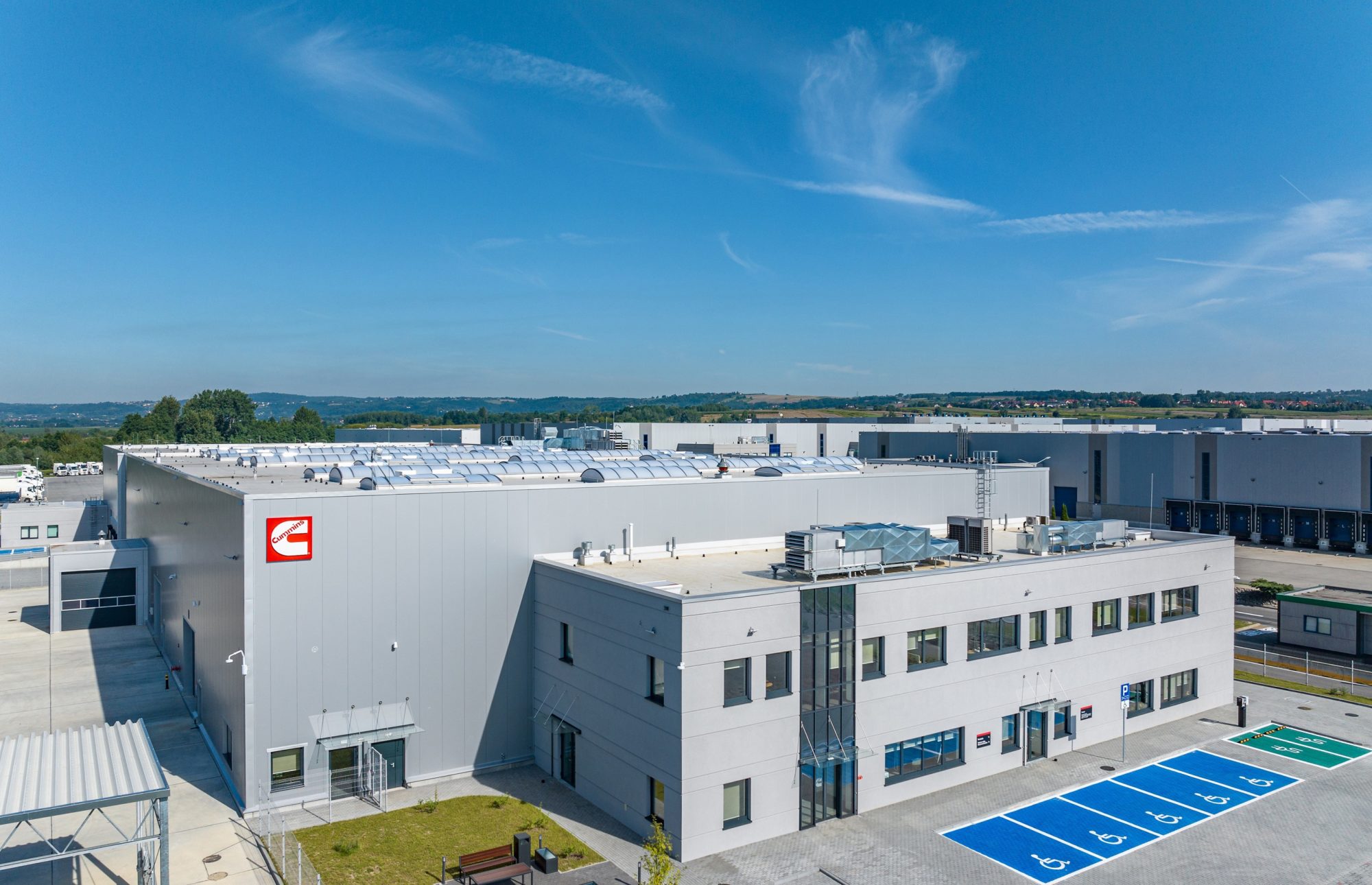In October 2023, Cummins made a big move in Europe for the future with the opening of its brand-new European Master Rebuild Centre for high horsepower engines in Krakow, Poland – the first of its kind in Europe. Cummins is offering a range of rebuild and remanufacture options at the Centre. Its Ultimate Remanufacture solution sees the full dismantling and reassembling of the engine, with the replacement of all worn components with Genuine Cummins parts, including wear and tear components. Ultimate Remanufacture engines have a full factory warranty equivalent to a new engine. IM Editorial Director Paul Moore sat down with Goran Galic, Director AM Sales, Strategic Accounts Europe and Ben Schilling, Sales Director, Mining & Rail at Cummins for some more insight into the facility and the rebuild market in Europe.
Q In major mining hubs like Australia or Chile, engine rebuilds are the norm not the exception. Will this new high horsepower rebuild facility in Poland make this strategy more common in European mining?
GG: This is a really big step for us in Europe where up until now we have had no dedicated Cummins rebuild centres on this scale. We have used smaller centres such as in Germany and the UK but not of this size and not as well equipped as this one. We have also been carrying out some standard rebuilds locally or through our dealer network, or the customers have been doing it themselves. And of course we have been offering new aftermarket engines as replacements. Now our portfolio has been extended with two new offerings – the ultimate remanufacture option which is effectively a ‘zero hour’ rebuild with a full factory warranty equivalent to a new engine. Then we have the advanced standard rebuild. Both involve the engine being disassembled, cleaned, inspected, re-machined, reassembled with Genuine Cummins parts and tested. These rebuilds we see as beneficial for both our mining customers and for Cummins.
Cummins’ Ben Schilling (left) and Goran Galic (right)


Q Are some customers more advanced than others in terms of their rebuild approach?
GG: This is the case in all mining markets in that some customers are more mature in their maintenance approach than others. In northern Europe for example, Boliden with its state of the art Komatsu 830E and 930E fleets at Kevitsa in Finland and Aitik in Sweden has quite a well established and managed process involving at least two rebuilds and maybe even three as these trucks will be working for 80,000 or even 90,000 hours. But in southern Europe there are other mining operations who previously have been used to running engines to end of life and replacing with a new one.
BS: I can talk about the US situation and how that has evolved over the past 20-30 years. We have been running what we call a named Master Rebuild Centre for the past 13 years – we were doing rebuilds before this but with a more basic approach. It was done in a Cummins owned or joint venture location still using Genuine Cummins parts and carried out by certified, trained technicians. But the process and process management were not as advanced as in the Master Rebuild Centre. Cummins can help our mining customers win by helping them achieve the lowest cost of production. For that we have two main levers – managing downtime and managing the inputs – ie aftermarket parts, rebuilt engines and fuel consumption. In the US, Canada and Mexico we only offer the certified, zero hour ultimate rebuild. And that is primarily because that it what the vast majority of our mining customers want. They know that this level of rebuild guarantees their lowest cost of production by limiting engine failures and extending their engine life. They may decide to do additional work with the machine OEMs as well to go beyond the typical two or three engine rebuilds, taking the life of the mining truck to 100,000 or even 120,000 hours. They can squeeze more out of the asset and keep it running longer, to reduce overall cost.
Q A lot of mines during and post pandemic have opted to try and “sweat their assets” as much as possible to maximise the value of their existing investments. Has that refocused efforts on rebuilds as well?
BS: I would say that focus was already in place long before the pandemic. We were not offering new aftermarket engines as a solution in the Americas already – if you wanted a new engine to refresh your equipment, you would still be getting a rebuilt engine from the rebuild centre as it is has been proven over many years to be the most efficient and cost effective solution. So the focus was already on rebuilds – we have seen some changes in customer behaviour though – people as you say are sweating assets more and moving to more advanced condition-based monitoring, such as deploying our PrevenTech to decide when to change the engine instead of just doing it on a schedule. They are doing oil samples weekly or even daily in some cases as well as using our advanced telematics systems to understand the health of the engine and catch any issues before the engine fails catastrophically. PrevenTech tracks every connected engine, securely transmitting alerts (via 4G or WiFi) for urgent and potential problems and recommendations for actions and servicing.
There is a healthy population of mining equipment in Europe, such as these NTE240 electric drive trucks with Cummins QSK60 engines working for Serbia Zijin Copper at the Bor operation

Q Is a rebuild less profitable for Cummins than a new engine? Is it more about long term benefit to the customer?
BS: We play the long game at Cummins. We want to help our mining customer succeed and view us as a partner. Because if they do they are more likely long term to buy from an OEM with Cummins power knowing that we will support their business in the best way possible.
Q When are the recommended hours to rebuild figures and the numbers of rebuilds over the engine life decided for a particular engine?
GG: It depends – looking at the Nordic region for example with some of our mining customers we have a cost per hour contract; at other sites we have more in-depth maintenance contracts where our people are maintaining the engines on site, and planning for mid-life overhauls and the eventual rebuild. For the former as it is cost per hour it is quite predefined and we know right at the start based on the estimated monthly hours when we might expect a rebuild to take place. And it matches pretty well – within a month or two. In the other type of contract where the customer is doing more day to day condition based monitoring, where they are following various parameters plus we are following fuel consumption and load factors and giving them feedback. In this case it becomes more of a discussion as to when they should have the rebuild. And there are other things to consider in this more flexible case – Komatsu for example may have a scheduled maintenance at 20,000 hours whereas our engine rebuild might be at 26,000 hours – so to some extent here we might try to extend Komatsu’s planned downtime and shorten the hours on ours so the truck will only have to have the extensive maintenance in one event. As already mentioned, PrevenTech is a really great tool for us – and for customers it really saves maintenance cost in the long run.
Q Given the importance of the Nordic region in large scale European mining, was there not consideration of having the rebuild centre there?
GG: I would say the southern European market is equally important – you have major mines there such as Ellatzite and Asarel Medet in Bulgaria plus the Bor and Majdanpek operations in Serbia now part of Zijin Mining. All these operations are running large mining trucks and excavators with about 400 high horsepower engines in that region. As stated, they have traditionally used more of a TCO approach for their trucks and just replaced engines with new ones but today are becoming more maintenance savvy and are already using strategies like extended oil interval changes and are now looking at options for rebuilds. Looking at Turkey, for various reasons engines in mining there are handled by our existing facility in the country, were we also conduct rebuilds. Elsewhere mining is also growing in Europe – one of the major mines in Spain is increasing the size of its mining trucks to increase efficiency and also lower emissions with new and larger engines – so there will be opportunities in other areas as well. Also, our focus is not only on mining as we see great opportunities in other segments like marine, rail or powergen.
Komatsu 830E-5 mining truck at Boliden Kevitsa

Q If you compare the new Krakow rebuild facility to others in major mining hubs such as in the US but also in Brisbane and Calama – is it similar or are there any major differences? Is each ‘tuned’ to the particular customers in those specific markets?
BS: That’s a good question. They are not rubber-stamped carbon copies of each other. For a start they are different sizes reflecting the fact they handle different numbers of engines. There are global teams in place to help drive quality and process at the MRCs. So when we identify a quality issue in Denver, lets say, then the team in Krakow is going to know about it and take it on board. So each MRC can learn from what is going on at similar centres globally. From a process perspective they are getting much more closely aligned. And thats a major change as at the beginning some of them started out as joint ventures or working with independent distributors – today thanks to a lot of this being brought under the Cummins corporate umbrella, we have been able to drive a lot more consistency at the MRCs. That said there remain some distinctive features at certain facilities.
Q Do you give the option to upgrade engines during the rebuilds, with the latest sensors for example? Or new components? Or is it always just back to original new state?
BS: Adding PrevenTech is best done when replacing an engine ie at engine exchange. As then you are tracking from the very beginning of the engine life plus its not only on the engine – it is in the aftertreatment area plus various sensors and antennas have to be installed. But we can do upgrades – if a customer wants to improve the ownership experience with their engine, for fuel delivery they can go from HPI (High Pressure Injection) to MCRS (Modular Common Rail System) for example. MCRS delivers a better experience for the operator, plus it has better characteristics for reliability and fuel consumption. This HPI to MCRS switch is becoming more common, but it depends on the miner and commodity. In the US it is more prevalent in those metallic commodities that currently have better margins, as opposed to coal or taconite, for example. The oil sands is a unique market and they do think quite strategically about value of the equipment over the very long term.
Q Is it fair to say that the vast majority of large miners using mining class Komatsu trucks are doing rebuilds and are part of a rebuild program? That is is the normal approach?
BS: Taking North American and Australian mining as examples, I would say 100% it is the norm. As Goran has outlined, there are other areas such as southern Europe where it is coming as part of an evolution in the market. And those customers now have the advantage of the MRC in Krakow – plus their teams can visit the facility and see first hand what we do and the technology we have at our disposal. Actually, in major mining regions we often invite the customer to the MRC to witness first hand the tear downs of their engines – they can learn a lot about their maintenance practices that way. Our service engineer can show them piece by piece what they are doing and why. Plus it is important to say that Komatsu is not the only major OEM that uses Cummins engines in mining – you have numerous Liebherr, Hitachi, BELAZ and other units using them – plus new players as well. And Chinese mining truck OEMs XCMG and NHL both have units in Europe running today with Cummins engines. Plus it isn’t just about trucks – excavators represent a very important market for our high horsepower engines as well.
Q When will the first rebuild take place at the Krakow MRC?
GG: The first one is already set to be conducted in February/March 2024 but the schedule is filling up fast for the rest of the year, both for Komatsu equipment from the Nordic region but also for engines from other OEM equipment and from other parts of Europe. The processes we need on everything from reuse criteria to supporting documentation plus the equipment we need are in place, it is just a question of ramping up to full capacity now.











